Distemper in Dogs
[ad#Commission Junction Entirely Pets]
Dear Your Own Vet,
I have a 8 month old mastiff/lab mix called Floyd. Lately he has been sniffing my other dog’s urine and has been having these weird facial seizures which also cause him to drool. What is the cause of these seizures and what can I do to stop them from happening?
The fits looks like my dog is chewing gum, but his teeth also chatter and he drools while its happening. I feel so bad and never know what to do. He is up to date on all of his shots, but I think he got the first puppy ones when he was about 6 or 7 months old cause I was at school with him. When I bought him they gave him a Univac 7 shot that I was told would prevent Distemper.
Also, my other dog Bandit just started having these seizures. Could it be contagious? He’s never had them until I brought Floyd home. Bandit’s seizures look like Floyd’s, but his body also quivers. Floyd’s been having these seizures daily, and sometimes on more than once. I wouldn’t say they have gotten worse, but they kept getting longer for a while until it stayed around the same length of time. Bandit’s only had it happen 3 or 4 times a month.
Thanks!
Trent
Dear Trent,
Facial seizures or “chewing gum” fits look like a big muscle pulsing in the face on and off, often above the eye by the temple, and it can be on both sides. Some dogs can drool and have teeth chattering as well. “Chewing gum fits” are most commonly caused by the Distemper virus, but can also be a form of localized epilepsy, or meningitis as well as muscle diseases. If it is distemper it is unlikely that he will ever stop doing that as it is from permanent nerve damage. Sometimes the symptoms get worse though.
WHAT ARE THE SYMPTOMS OF DISTEMPER?
WHAT IS DISTEMPER?
Distemper is a virus (Morbillivirus) that is related to human measles. It infects dogs and their relatives as well as some other species, such as ferrets. Cats cannot get canine Distemper and what the public knows as Feline Distemper is an unrelated virus, which is more like Parvo virus than Canine Distemper. Distemper affects more than one place in the body at the same time. It affects the immune system, and suppresses the body’s ability to fight off infections which often leads to the respiratory system getting affected – dogs can develop pneumonia as well as constant pussy discharge from their noses and eyes. Dogs also get diarrhea in the early stages of Distemper, as it affects the gut with immunosuppression. Dogs can get a conjunctivitis (the membranes of the eyes are infected) causing pus to accumulate in the corners of the eyes. Finally, it hits the nerves and the brain, stripping the protective myelin sheath off the outside of the nerves and attacks the white matter in the brain, leading to twitching and spasms, which can progress to full blown seizures and death.
There is usually 1-2 weeks from time of exposure to development of initial clinical signs (incubation period), but it can be as long a 4-5 weeks or even more. Occasionally neurological signs develop months after exposure in dogs that never showed initial signs of infection. The fever spikes 3-6 days post-infection, obvious clinical signs are seen between 1-4 weeks after infection (longer incubation more common), and nervous signs signs may appear up to 3 months later with or without preceding signs. (2) Dogs shed the virus for 5-7 weeks in the urine and feces. (3) Distemper is transmitted in any bodily fluids, such as urine, saliva and nasal discharge. Distemper is found all over the world, but is more prevalent in third world countries, or where people don’t vaccinate their dogs strictly.
WHAT ARE THE SYMPTOMS OF DISTEMPER?
I have listed these in the order they usually appear as the illness progresses, but each dog is different. Some dogs show most of the signs and some dogs only one or two. It depends on the dog’s immune system at the time – for example if they have had some vaccines, or if they received some protection from their mother through the milk, they are more immune and fewer signs would be seen than a dog that had never been exposed to Distemper before and had no protection from it’s parent. (Maternal antibodies to disease only last for the first few weeks of a pup’s life and then wear off, which is why puppies are vaccinated three to four times between 6 and 16 weeks of age)
- An unexplained high fever that does not respond to antibiotics and keeps coming back.
- Lymphopaenia (low numbers of white blood cells known as Lymphocytes, which are produced in the glands)
- Diarrhea and vomiting
- Pneumonia with soft cough
- Dog is thin and in poor condition
- Pustules on the skin
- Depression and innapetance
- Pus in the corners of the eyes (Conjunctivitis and Dry eyes)
- Cloudiness of the eyes (Anterior Uveitis)
- Blindness and sensitivity to light (3)
- Pussy discharge from the nose
- Hardpad – the nose and the pads of the feet become thickened (not that common)
- Enamel hypoplasia – dirty brown marks on the teeth where enamel didn’t develop if a pup gets distemper while teeth were developing in the gums.
- Twitching of the muscles of the face (chewing gum fits)
- Twitching of the leg muscles
- Seizures
- Aimless wandering
- Death
- Old dog encephalitis
DIAGNOSIS OF DISTEMPER
Distemper is tough to diagnose. You have to test at the correct stage of infection to pick up up the virus. The following tests exist:
- Conjunctival smears – A cytobrush is rubbed over the surface of the eye and inside the eyelids to pick up cells from the membranes of the eye (conjunctiva). These are then rolled onto a glass slide, stained and checked for particles that stain pink inside the cells called “inclusion bodies (Lentz copuscles)” which are directly from the Distemper virus. It is not common to pick these, up but if you do, you can make a provisional diagnosis of Distemper. These inclusion bodies can also be picked up in internal organs if an autopsy is done. Other viral infections, such as Adenovirus and Parainfluenze can also cause inclusion bodies, so if your vets sees these, he/she should send the sample to the laboratory for diagnosis.
- Blood tests for Distemper Antibodies – These are only useful if your dog has never had a vaccination ever before. Exposure to the virus or a vaccination against Distemper causes a rise in antibodies which can be picked up in the blood serum. It is also possible to split the antibodies into antibodies that have recently been produced (IgM) and those that have been in the body for a few months or longer (IgG), If , for example, your dog had 1 vaccine as a puppy, and none since and is now 3 years of age and suddenly develops signs of Distemper, your vet could test for IgM and IgG. You would expect IgG to be high due to the puppy vaccine, but if IgM is high as well, it can point towards recent exposure to the virus and your vet will be able to make a provisional diagnosis of Distemper. IgM only lasts a few weeks.
- Analysis of the Cerebrospinal fluid. Of all the tests, I have found this one to be the most helpful. It tests for antibodies against the Distemper virus in the spinal fluid, which can only be produced if there is inflammation occurring in the brain at the time. It does require a general anesthetic, so is slightly more risky than the other tests, but can give a positive diagnosis of Distemper.
- Autopsy – on autopsy samples of the lymph glands, brain, kidneys, bladder, third eyelid, thymus, lung, intestine, stomach and spleen are checked for “inclusion bodies” as well. The brain is also checked for demyelination – which is when the myelin sheath (the protective outer sheath on the nerves) is stripped away.
- Checking to see of the eyes are dry – a positive test only shows the eyes are dry as there are many causes of dry eye besides distemper. It should be combined with an internal exam of the eye to check if there is also anterior uveitis. (3)
TREATMENT OF DISTEMPER
Treatment for Distemper is supportive. Antibiotics are given to treat the diarrhea, pneumonia and conjunctivitis.
Anti emetic drugs such as Metaclopramide will help to control vomiting. Multivitamins, especially those with high levels of vitamin B in them are an aid to the immune system, stimulate appetite, as well as helping the brain recover from the infection. If dogs are very ill, they can be given intravenous fluids and possibly also tube fed or fed orally. If one of your dogs is diagnosed with Distemper, vaccinate all your other dogs at least twice, one month apart.
HOW DO I PREVENT DISTEMPER?
Vaccinate your dog!! Puppy vaccinations should start at 6-7 weeks old, and then be repeated 2-3 times every 3-4 weeks after that to prevent Distemper. One vaccine won’t prevent it entirely!! Your dog should also be vaccinated at least every 2-3 years to keep his immunity against Distemper strong. Distemper doesn’t last for more than a few weeks in the environment and will be killed by most disinfectants with quaternary ammonium compounds in them. If your pet recovers from Distemper, he will continue to shed the virus for up to three months but usually for 5-7 weeks. If you want to get another dog, you should wait for the 3 months plus another month for all the Distemper to die in the environment as well as disinfecting all hard surfaces such as tiles and concrete runs and courtyards and the kennels and bedding.
Dr Claire Demmer
Veterinarian
MRCVS
BVSc (Hons)
www.yourownvet.com
[ad#Commission Junction Huddle]
REFERENCES
1. http://www.provet.co.uk/petfacts/healthtips/caninedistemper.htm
2. http://www.sheltermedicine.com/portal/is_canine_distempervirus.shtml
3. http://publications.royalcanin.com/renvoie.asp?type=1&cid=124353&id=102462&com=2&animal=0&lang=2&session=2151005
4. http://www.caninedistemper.org/
5.http://bptanimalcontrol.com/diseases
6.http://www.marvistavet.com/html/body_canine_distemper.html



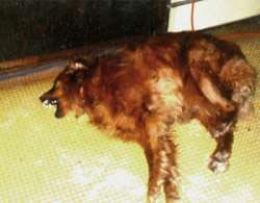


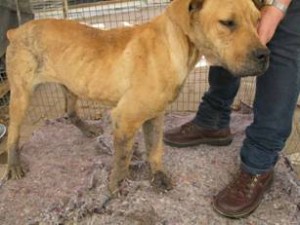
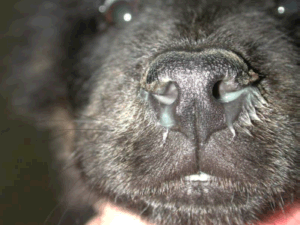

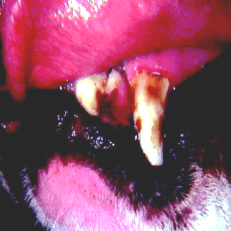
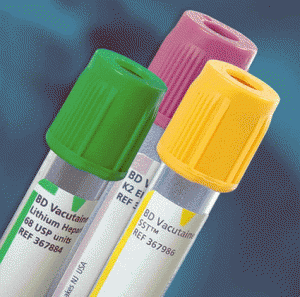
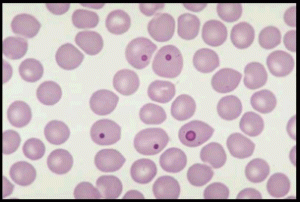

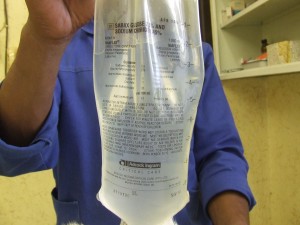
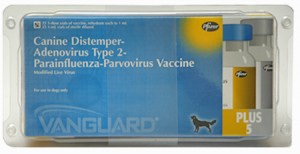
Leave a Reply
You must be logged in to post a comment.